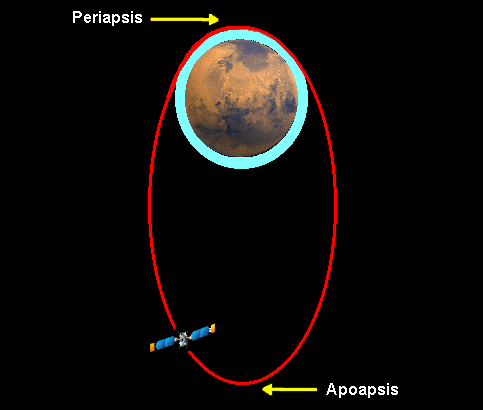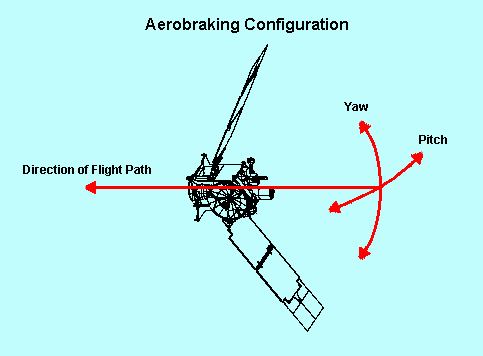

 |
During the aerobraking phase of the mission the periapsis of the orbit is lowered into the outer fringes of the Martian atmosphere. By decreasing the speed of the spacecraft at the periapsis, the altitude of the apoapsis is lowered. In this manner the orbit gradually becomes less elliptical and more circular. Great care is taken in selecting the altitude of each forthcoming periapsis drag pass. Unlike past experience with aerobraking during the Megellan to Venus, the Martian atmosphere has a substantial amount of variability in the altitude to which it extends above the surface of Mars.
Managing Risk
During each aerobraking approval meeting, MGS scientists and engineers use the results of past drag passes together with atmospheric models and other analytical tools to determine the optimal altitude for the next drag pass. If the altitude selected is too high, little aerobraking will be achieved and there is a risk of falling behind the schedule of the new mission plan. If the altitude selected is too low, the spacecraft may enter into a region of higher than desired atmospheric density which could place high loads on the solar panels. For more details see excerpts from CDR presentations.
 |
Keeping an Eye on Dynamic Pressure
During the each meeting the Dynamic Pressure Charts are carefully reviewed for any unusual or unexpected behavior. The charts from past drag passes are tacked on the wall of the Aerobraking Command Center at location 15. The dynamic pressured is plotted in units of Newtons per square meter, or Pascal. It must be noted that the dynamic pressure is not a measured pressure, but a derived pressure using accelerometer data. It is partially for this reason that there is a high degree of cyclical variation in the pressure plots. Also the spacecraft tends to yaw and pitch as it goes through the Martian atmosphere. ( See drag pass #10 on the Spacecraft Animation page. ) These effects can also result in variation in the derived dynamic pressure.